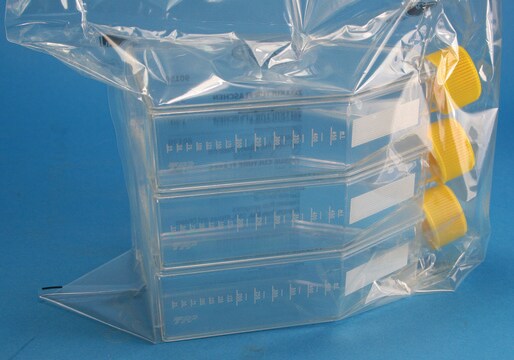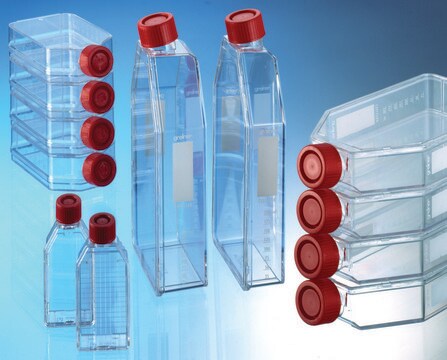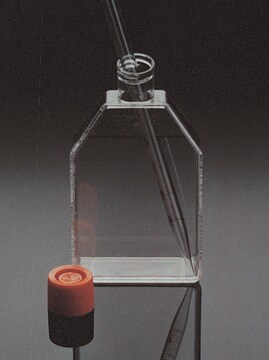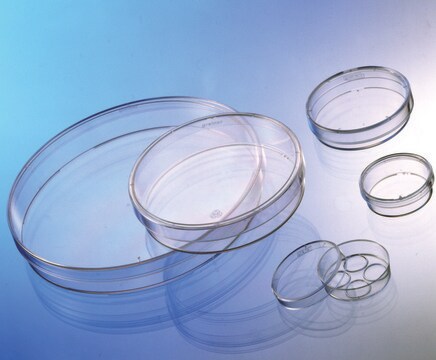C7231
Greiner culture flasks, tissue culture treated
surface area 75 cm2, canted neck, with cap, filtered
Synonym(s):
culture flask, tissue culture flask, tissue culture flasks
About This Item
Recommended Products
material
canted neck
polystyrene flask
screw top red high-density polyethylene cap
sterility
sterile
feature
DNase free
RNase free
with cap filtered
packaging
pack of 120 ea
manufacturer/tradename
Greiner 658175
capacity
250 mL
surface area
75 cm2
working volume
38 mL
Looking for similar products? Visit Product Comparison Guide
General description
Features and Benefits
- Greiner culture flasks offer optimal cell adhesion through physical surface treatment.
- Flasks are non-cytotoxic, non-pyrogenic and free of detectable DNase, RNase and human DNA.
- The specific design facilitates optimal access to the samples with a cell scraper or pipette.
- The canted neck ensures additional protection against contamination.
- A standard screw cap with a secured click-in ventilation position enables gas exchange within the flasks.
NOTE: For Research Use Only. Not for use in diagnostic procedures, unless otherwise indicated.
Legal Information
Certificates of Analysis (COA)
Search for Certificates of Analysis (COA) by entering the products Lot/Batch Number. Lot and Batch Numbers can be found on a product’s label following the words ‘Lot’ or ‘Batch’.
Already Own This Product?
Find documentation for the products that you have recently purchased in the Document Library.
Customers Also Viewed
Protocols
Cryopreservation efficacy - which includes post-thaw recovery, viability, and functionality is of importance to both research and clinical applications. The cumulative stresses that result from the cryopreservation process and suboptimal freeze media result in cell death from necrosis and apoptosis.
Dilute fibronectin to the desired concentration. Optimum conditions for attachment are dependent on cell type and application. The typical coating concentration is 1 – 5 ug/cm2.Fibronectin coating protocol, products, and FAQs.
Our team of scientists has experience in all areas of research including Life Science, Material Science, Chemical Synthesis, Chromatography, Analytical and many others.
Contact Technical Service



